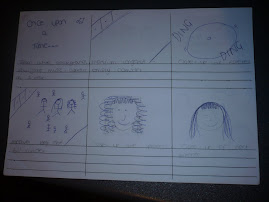Todorov developed the theory of disrupted equilibrium (balanced)
He identified that stories follow a typical pattern:
- Equilibrium
- Disequilibrium
- Equilibrium
This applies equally well to film texts.
Equilibrium: The 'status quo' where things are as they should be.
Disequilibrium: The 'status quo' is disrupted by an event.
Equilibrium: Is restored at the end of the story by the actions of the hero.
What is the equilibrium at the beginning of a crime genre or horror genre film?
- Attack
- Murder
- Robbery
How and when is equilibrium restored in a crime film / a horror film?
- Crime solved
- Monster dies
There can be several moments in the plot where resolution of equilibrium takes place, for example: when pieces of the detectives puzzle fall into place.
Todorov later developed this into 5 stage patterns:
- A stage of equilibrium at the outset.
- A disruption of the equilibrium by some action.
- A recognition that there has been a disruption.
- An attempt to repair the disruption.
- A reinslatement of the equilibrium.
Roland Barthes: French Theorist
Barthes believes that there are 5 action codes that enable an audience to make sense of a narrative:
- Hermeneutic (narrative turning-points) we know where the story will go next.
- Proairtic (basic narrative actions) eg: detective interview suspect or femme fatale seduces hero (see Propp's 31 functions)
- Cultural (prior social knowledge) eg: our attitudes to gender or racial stereotypes.
- Semic (medium- related codes) intertextuality
- Symbolic (themes) Iconography or a theme such as 'image versus reality' (Curtis Hanson)
Claude Levi-Strauss: French Structuralist 1970's:
Claude Levi-Strauss is most noted for his theory of Binary oppositions. In order to find those oppositions, Levi-Strauss was less interested in:
- Syntagmatic relations: eg: how events line up in the narrative structure to develop the plot.
More intereseted in:
- Paradigmatic relations: eg: those events and features that belong to the theme of the piece, especially within genre based texts.
Levi-Strauss used the 'Western' film genre to develop his theory of Binary oppositions:
- Homesteaders - Native Americans
- Christians - Pagan
- Domestic - Savage
- Weak - Strong
- Garden - Wilderness
- Inside Society - Outside Society
Levi-Strauss used the 'Western' film genre to develop his theory of Binary oppositions:
- Detective - Villian
- Princess - Femme Fatale?
- Straight - Criminal
- Weak - Strong
- Safe Streets - Mean Streets
- Sane - Mad
- Poor <<<<<<<<<>>>>>>>> - Rich
(Could Be Either Way)
Wednesday, 4 November 2009
Subscribe to:
Post Comments (Atom)






No comments:
Post a Comment